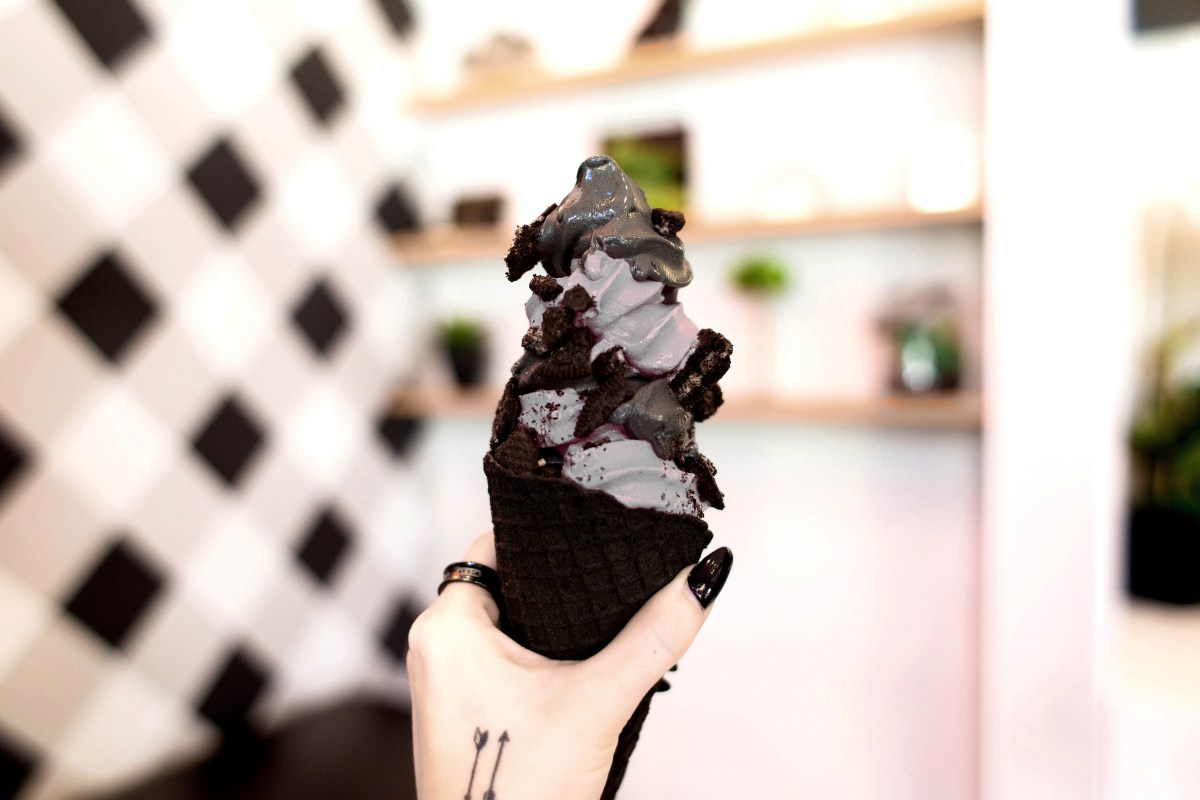Activated charcoal is the latest movement sweeping across the industry, turning everything in its path to the dark side. By Annabelle Cloros.
What’s old is new again. And in the case of activated charcoal — thousands of years old. Originally used to purify water, the black stuff’s detox powers were soon discovered and quickly became a staple to treat poisonings, cleanse skin and whiten teeth. But it’s recently found its way into our food, taking clean eating to a new level.
Before you add any kind of charcoal to food, there are a number of grades and a specific process it has to undergo before it becomes ‘activated’ and deemed safe for consumption.
So how is it made? Activated charcoal is typically produced by heating wood or coconut shells to high temperatures until they are completely burnt — or carbonised. The resulting ash is treated with hot steam which increases the surface area of the charcoal, resulting in a material that has the ability to absorb toxins.
Local brand Pressed Juices were one of the first in Australia to jump on the black magic bandwagon, creating Black Lemonade. “Activated coconut charcoal holds its pore structure and all of its absorption characteristics until it is put in contact with compounds that can be absorbed,” says Natarlia Hansen, nutritionist at Pressed Juices.
Activated charcoal has been a key ingredient in juice cleanses for many years, promising to clean you from the inside out. “[It] assists with lowering cholesterol, bloating, liver and kidney issues, nausea and vomiting and helps to eliminate the body of toxins, heavy metals, pesticides, nicotine and alcohol,” says Natarlia.
But a large part of charcoal’s rise to the top of the food chain can be credited to its Insta-worthy jet black shade. In recent months, Instagram has been swamped with thousands of images of black burgers, pancakes, ice cream, lattes and bagels, proving consumers are more interested in the novelty of snapping a photo than its taste or health benefits. “Activated charcoal has become a huge trend,” says Natarlia. “The deep black in the fridge is always an eye-catcher.”
LA’s Little Damage is a key player in the charcoal food realm, dominating Instagram with their signature charcoal-dyed soft serve cones. “In our soft serve, we wanted to try something new and unique,” says founder Jenny Damage. “We wanted to implement a natural ingredient to achieve black ice cream.”
But Little Damage’s soft serve is more almond flavour than burnt bits, with the team using activated charcoal for its shade, not its flavour. “We put small amounts of activated charcoal that is mixed in well with our other ingredients, so for us, the taste of charcoal in our ice cream is pretty much transparent.”
In spite of its ’Gram-worthy status and detoxifying abilities, activated charcoal shouldn’t be incorporated into your entire menu due to its detoxifying abilities, which don’t discriminate when it comes to absorbing toxins, nutrients and minerals. Health perk, food gimmick or the key to social media success, activated charcoal is definitely a great divider.
This article originally appeared in Hospitality’s September edition.

